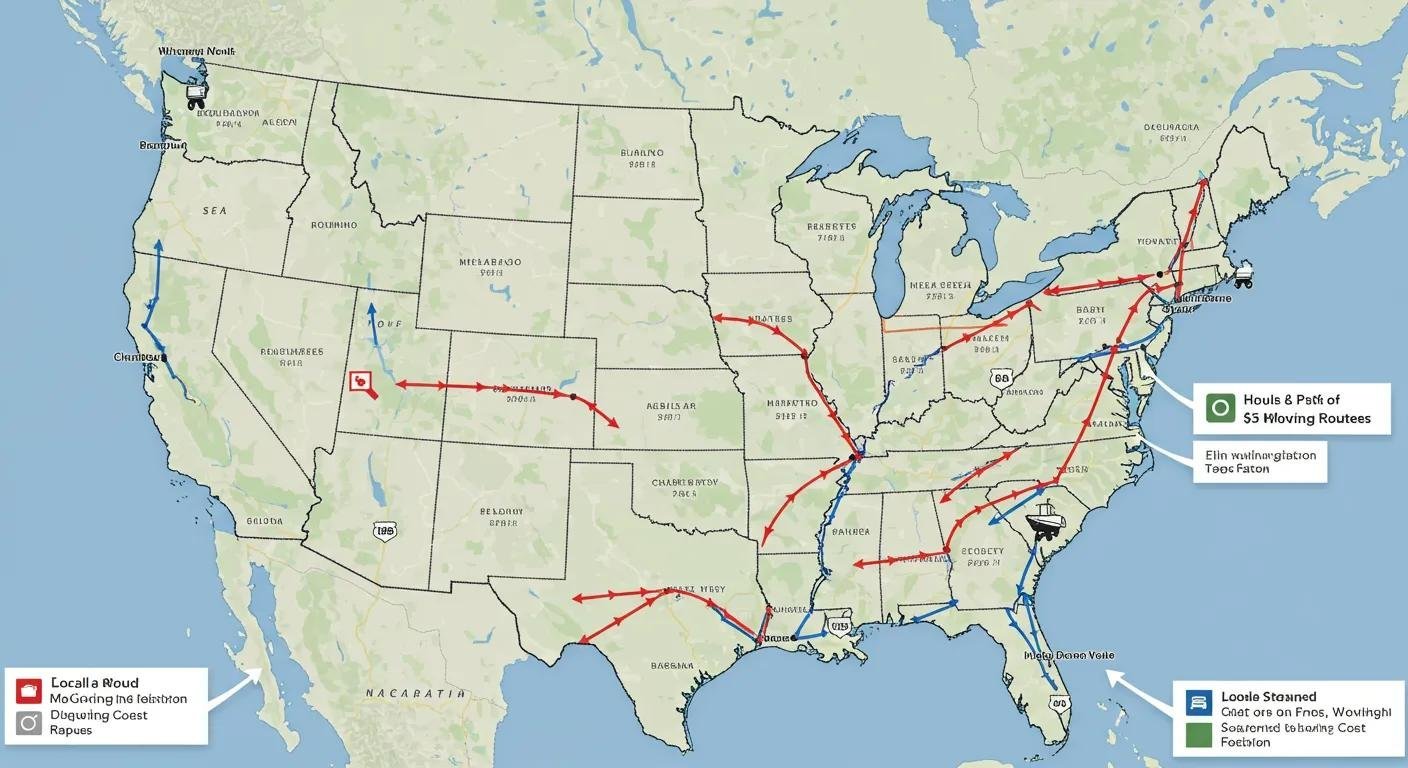What Drives Moving Company Prices Upward?

Factors Driving Moving Costs | Horizon Boston Movers | Movers Boston
Each move represents a significant financial investment, and understanding the factors influencing moving company prices helps save money while ensuring reliable service. Factors like distance, volume, and service tiers work in concert to determine final costs, and experts such as Horizon Boston Movers rely on transparent pricing models to maintain trust and efficiency. This guide examines six key cost drivers: distance of the move, volume and weight of your belongings, selected services, timing and seasonality, additional fees, and insurance options. Armed with these insights, readers can compare estimates confidently and choose solutions that promote both value and peace of mind.
Why Do Moving Company Prices Vary? Key Factors Affecting Moving Costs
Moving cost variation stems from measurable influences such as travel distance, shipment size, and service complexity. By breaking down each element—distance, volume, services, timing, fees, and insurance—customers gain clarity on quotes and avoid unexpected expenses.
What Factors Affect Moving Costs?
This article outlines numerous factors influencing moving costs, including the weight and distance of the move, the time and number of movers required, and additional charges for long carries, elevators, stairs, bulky or specialty items. It also highlights the impact of insurance, packing services, storage, and peak moving seasons on the final price.
This source directly supports the article’s detailed breakdown of how distance, volume, services, timing, and additional fees contribute to overall moving expenses.
How Does Distance Influence Moving Prices? Local vs. Long-Distance Moves

Distance dictates fuel costs, travel time, and labor hours, directly affecting overall moving charges. The table below compares typical local and long-distance cost ranges based on mileage and crew allocation.
What Role Does Volume and Weight of Belongings Play in Pricing?
Total volume and weight of household goods determine labor time, truck space, and safety requirements, directly impacting the final moving quote. The following breakdown illustrates how common items affect pricing.
How Do Different Moving Services Impact Your Quote? Packing, Storage, and Specialty Items

Additional services such as professional packing, secure storage, and specialty-item handling increase a moving quote based on complexity and resources required. Common service tiers include:
- Full-Packing Service improves protection and speeds up unloading but raises material and labor costs.
- Storage Solutions support short- or long-term needs with ongoing fees that reflect facility and handling expenses.
- Specialty Handling provides trained staff and equipment for pianos or antiques, ensuring safety at a premium rate.
Top Factors That Influence Your Estimate Moving Costs
This guide emphasizes that moving costs are significantly influenced by the distance of the move, the volume or weight of belongings, the time of year (with peak seasons leading to higher prices), and the complexity of the move, including specialized items and additional services like packing.
This research reinforces the article’s discussion on how distance, volume, seasonality, and specialized service requirements are critical determinants in calculating accurate moving estimates.
How Does Timing Affect Moving Company Prices? Seasonal and Scheduling Variables
Seasonal demand and schedule preferences significantly alter moving rates by influencing staffing and resource availability. Planning strategically can improve savings on your move.
Why Are Moving Prices Higher During Peak Seasons and Weekends?
During peak summer months and weekend slots, high demand for crews and trucks drives up hourly rates and minimum booking requirements. Common pressure points include:
- Summer Peak Premiums tied to June–August school calendars.
- Weekend Surcharges due to reduced weekday availability.
- End-of-Month Demand surcharges for limited time slots.
When Is the Cheapest Time to Move? Off-Peak Discounts and Last-Minute Fees
Moving during off-peak seasons or midweek slots can unlock discounts, although last-minute bookings may incur expedited service fees. Effective timing strategies include:
- Winter Moves often carry lower base rates due to reduced demand.
- Midweek Scheduling (Tuesday–Thursday) avoids weekend and end-of-month surcharges.
- Early Reservations secure off-peak discounts.
- Last-Minute Requests may attract surge pricing for rapid deployment.
What Additional Fees Can Increase Your Moving Costs? Hidden Charges and Accessibility Factors
Beyond base rates, factors like building access and protective measures introduce extra fees that elevate the total moving cost. Recognizing these surcharges prevents surprises on moving day.
Which Extra Fees Should You Expect? Stair Carry, Elevator, and Long Carry Charges
Stair carry charges, elevator fees, and long carry surcharges account for added labor and equipment when access is limited. Typical surcharges include:
- Stair Carry Fee applies per flight of stairs for additional on-site labor.
- Elevator Use Fee reflects building management policies and time spent.
- Long Carry Surcharge covers distances beyond 75 feet between truck and entry.
How Does Moving Insurance Affect Overall Pricing? Valuation and Protection Options
Opting for valuation coverage or third-party insurance increases the total quote by adding protection premiums based on declared value. Common protection levels include:
How Can You Get an Accurate and Transparent Moving Quote? Tips to Understand and Compare Prices
Providing detailed move information and understanding pricing components ensures a precise and transparent estimate. Clear communication minimizes discrepancies between initial quote and final invoice.
What Information Should You Provide for a Precise Estimate? Inventory, Distance, and Services
Accurate inventory lists, exact move distance, and specific service selections enable movers to calculate a tailored quote. Essential details include:
- Detailed Inventory Count for boxes, furniture pieces, and appliances.
- Exact Addresses with access notes at pickup and delivery points.
- Service Requirements such as packing, storage, or specialty handling.
How Do Moving Companies Calculate Their Charges? Labor, Logistics, and Service Tiers Explained
Moving companies derive charges from labor hours, logistical costs like mileage and fuel, and chosen service tiers such as packing or storage. Key components involve:
- Labor Component: Hourly rate multiplied by crew size and job duration.
- Logistics Component: Distance-based mileage and fuel surcharge calculations.
- Service Tiers: Flat rates or per-item fees for additional services.
Understanding the interplay of distance, volume, service selection, timing, and surcharges deepens budget planning and prevents last-minute cost escalations. By requesting detailed, itemized quotes and aligning move schedules with off-peak windows, customers improve price transparency and save on relocation expenses. Proactive communication of inventory and access details ensures more accurate estimates and fosters trust between movers and clients. With these insights, anyone can approach their next move with confidence and clarity.


